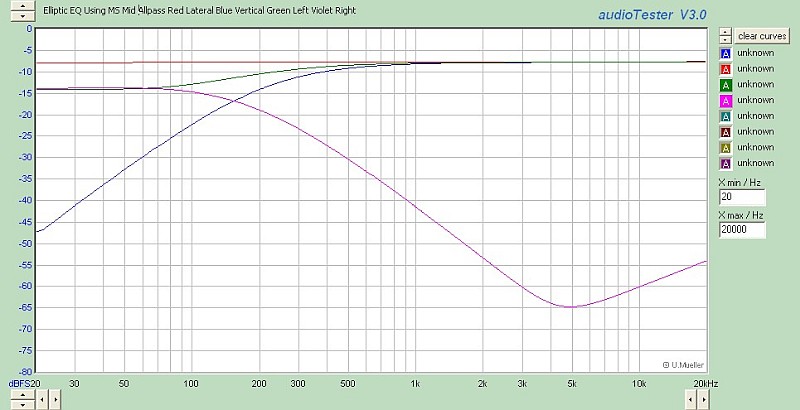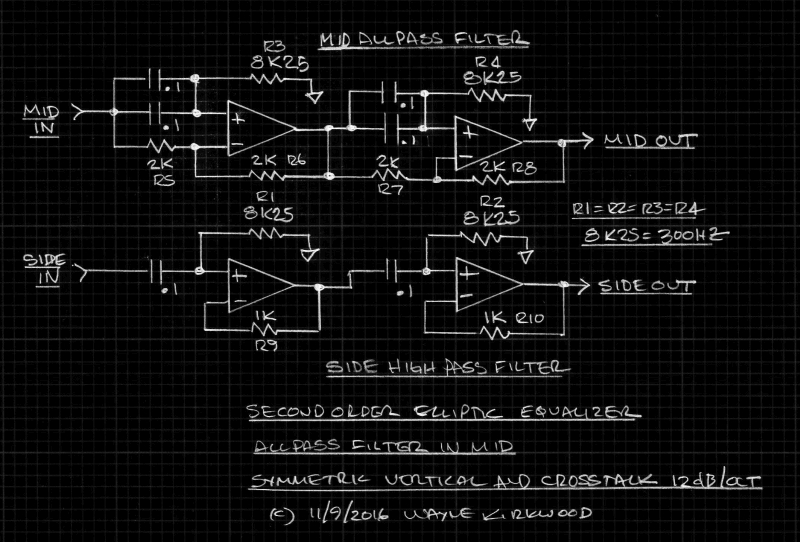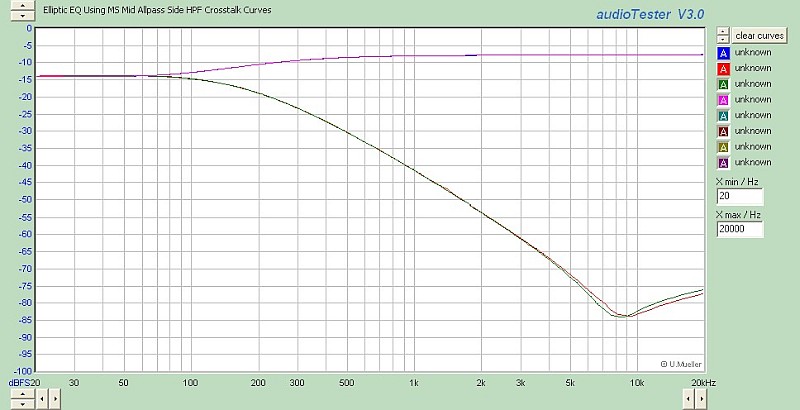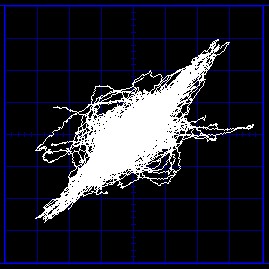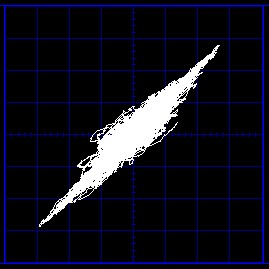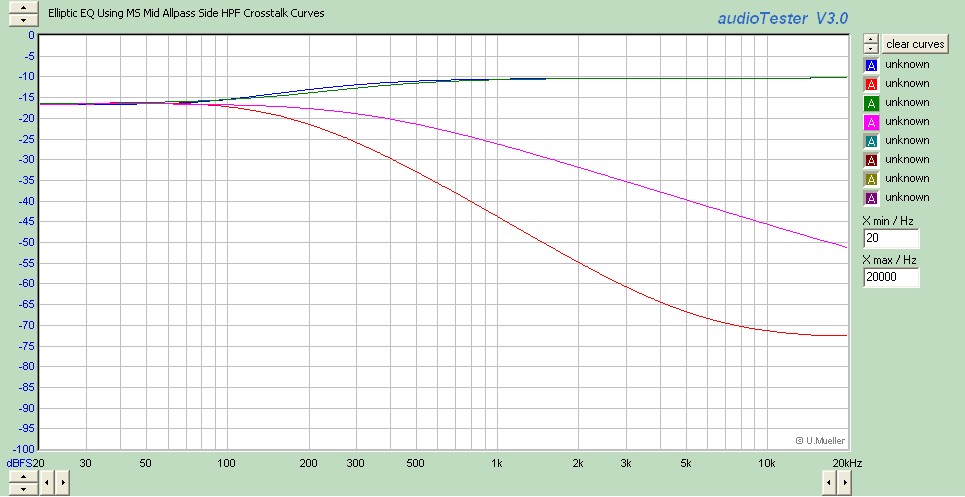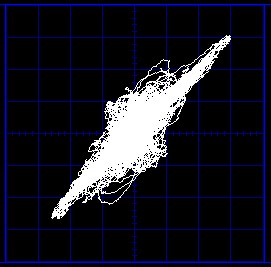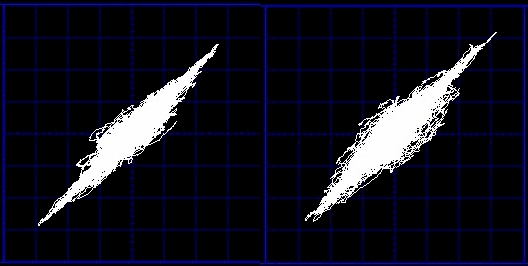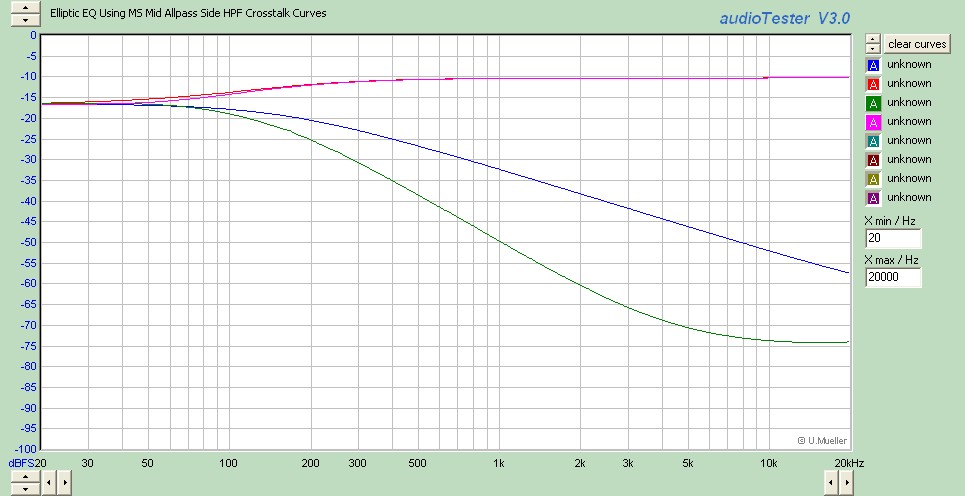I wanted to provide an update which includes a rather interesting discovery.
Brickwall-limited material becomes "unlimited" when processed by the allpass filter of the EE...
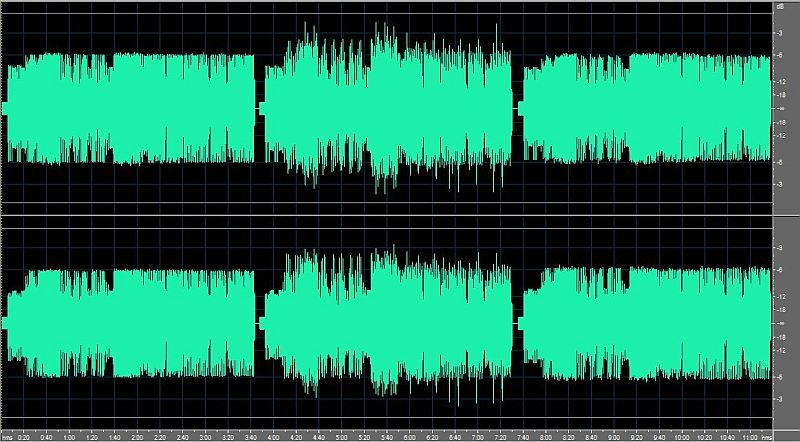 Daft Punk, "Harder Better Faster Stronger," No EE, Second Order, First Order.
Daft Punk, "Harder Better Faster Stronger," No EE, Second Order, First Order.
The first envelope is with EE bypassed with brickwall limiting evident.
The second envelope is with 300 Hz second order EE. Note the 3-4 dB increase in peak level.
The third envelope is with 300 Hz first-order EE. There is a slight change in peak value but not much.
Statistics run on each of the segments confirm that the RMS levels are nearly identical but the middle example has peaks that are 4-5 dB hotter.
Material which has not been brickwall-limited does not "unlimit."
What appears to be going on is that in the second-order example L and R have undergone phase rotation from the original that "undoes" phase rotation in the brickwall limiter.
The effect of peak "unlimiting" due to cascaded phase rotation has been observed here:
http://www.tonnesoftware.com/appnotes/a ... lpass.html
If the applied waveform is symmetrical top-to-bottom (i.e. has no even-order harmonic content) then the allpass can actually increase the signal's peak-to-peak amplitude.
It sure does...
This is where it gets interesting. From Foti and Orban:
http://www.orban.com/orban/support/orba ... th_1.3.pdf
A Typical Processing Chain—What Really Goes On When Your Recording is Broadcast
A typical chain consists of the following elements, in the order that they appear in the chain:
Phase rotator. The phase rotator is a chain of allpass filters (typically four poles, all at 200Hz) whose group delay is very non-constant as a function of frequency. Many voice waveforms (particularly male voices) exhibit as much as 6dB asymmetry. The phase rotator makes voice waveforms more symmetrical and can sometimes reduce the peak-to-average ratio of voice by 3-4dB. Because this processing is linear (it adds no new frequencies to the spectrum, so it doesn’t sound raspy or fuzzy) it’s the closest thing to a “free lunch” that one gets in the world of transmission processing.
What I think is happening is that some plugins use phase rotation as a first step in their brick-wall limiting.
When brick-walled material is broadcast that tightly-controlled envelope is immediately undone in the first process.
Instead of making the job of the AGC, Multi-band and Limiter easier brick-walling actually makes it harder.
This article discusses broadcast processing of clipped music which is not necessarily the same as "hyper-compressed phase rotated brick-walled" material.
Making Audio Better One Square Wave At A Time:
https://www.telosalliance.com/images/Ma ... 20Time.pdf
What we have going on here is the second-order EE simulating the "undo" effects of broadcast phase rotation.
Overall the EE has 2 poles at 300 Hz; the Omnia or OptiMod 4 poles at 200 Hz.
Having brick-walled material undone in EE is not a desirable property.
Being able to identify phase-rotated brick-walled material and correcting it in mastering may be very useful: It can potentially identify artifacts that occur in broadcast.
"Unwrapping" phase rotated material and then processing dynamics conventionally might produce a more open, musical result.
The overall Left and Right phase rotation produced by the the EE Side filter and the phase correcting Mid Allpass can be undone to prevent the undoing of brick-walled material.
It looks like an "inductive" allpass network, using a gyrator, could re-align Left and Right to "re-rotate" material back.
This would provide brickwall in/brickwall out.
Having a 4 pole 200 Hz allpass for Left and Right to "unlimit" also seems like a good tool to have...
